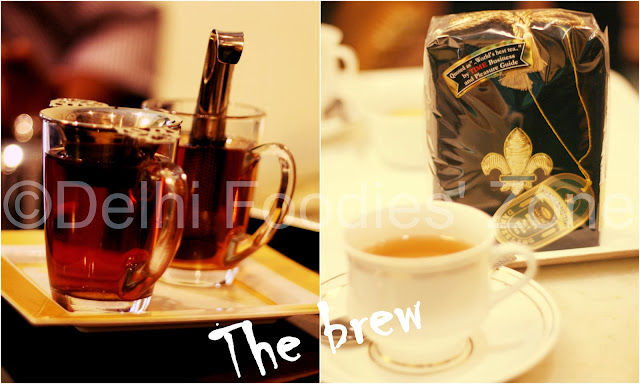The amuse bouche was kulle ki chaat. A trademark of Old Delhi chatwallas, this version is how it is made at homes by Kayastha families (with distinct use of smaller chickpeas). A cucumber was hollowed and stuffed with the chickpeas, lemon juice and the notoriously famous chat masala that the Old Delhi kulle wallas use. An individual platter of aptly portioned starters was made up of Mangode or moong dal pakodis, Kalmi Vadas and Vegetarian Shami Kababs. With every morsel, Skeeter tasted a different note. Mangode came with an added punch of whole coriander; one has to taste it to believe what a simple addition can do to the humble snack. The Kalmi Vadas that Skeeter is used to in her plate of chaat in Old Delhi, is not a patch on what she ate at Kayastha Khaterdari. These were crisp and stiff on the outside revealing a semi-soft interior on biting. They were not-excessively oily from all the frying, neither tough on the tooth. It Skeety could go on about the texture, but they tasted superlative too. They were spiced to perfection and the lentils combined with the spices complemented with the correct frying technique and temperature, made them a delight to the senses. The star of the appetizers, however, were the Vegetarian Shami kababs that melted in the mouth and had a supreme meaty flavour, derived from lentils again. These were delicately spiced and salted to perfection. Although Kayastha food has a lot of meat based preparations, many Kayastha ladies eat vegetarian fare and these preparations are their inventions/ adptation of meaty dishes to vegetarian ones.
Skeety was already in a food wonderland when there was an onslaught of platters mounted with Bedmi Pooris and bowls full of Urad Dal. The Bedmi pooris were again different from the ones we’re used to. Skeety has seen many a cook make this and the general preparation goes like this: Bedmi flour (coarsely ground) dough is filled with a thumb impression of the pitthi (spiced stuffing made with dal and coarsely ground spices again). At home, we call it pitthi poori as well. The maharaj who used to come home or even the halwais Skeeter encounters in Old Delhi quite often have this fast yet rhythmatic movement of filling them with a thumb of pitthi, rolling them and dunking in a hot wok of oil. The joy to watch them puff up is something else. Skeeter being Skeeter would only take those that puffed up like a balloon. Anoothi’s Bedmi pooris were a revelation: soft, thicker than normal and smeared generously with the pitthi and not just a thumb in the center. They went so well with the homemade pickles (green chilli two ways and tangy karonda pickle) that you’d not need anything else to gobble them down with. But there were the kacche kele ki machli, a mock non-vegetarian preparation of raw bananas, cut like fish which was interesting; kathal ki sabzi or jackfruit, a very homely and unique preparation and the Urad dal that had a tiny yet strong hing tadka sitting somewhere on the top of the bowl underneath slivers of golden fried onions. Thought it seemed like a simple dish, to do the Urad Dal right is an art; and this comes from not-an-urad-fan, so there! There was a matar-ki tehri too. The meal ended with a quiz that had the guests bundling up in teams and there was makhane ki kheer (lotus seed pudding) and lauki ki launj (a barfi made from bottlegourd) to end the evening on a sweet note.








































